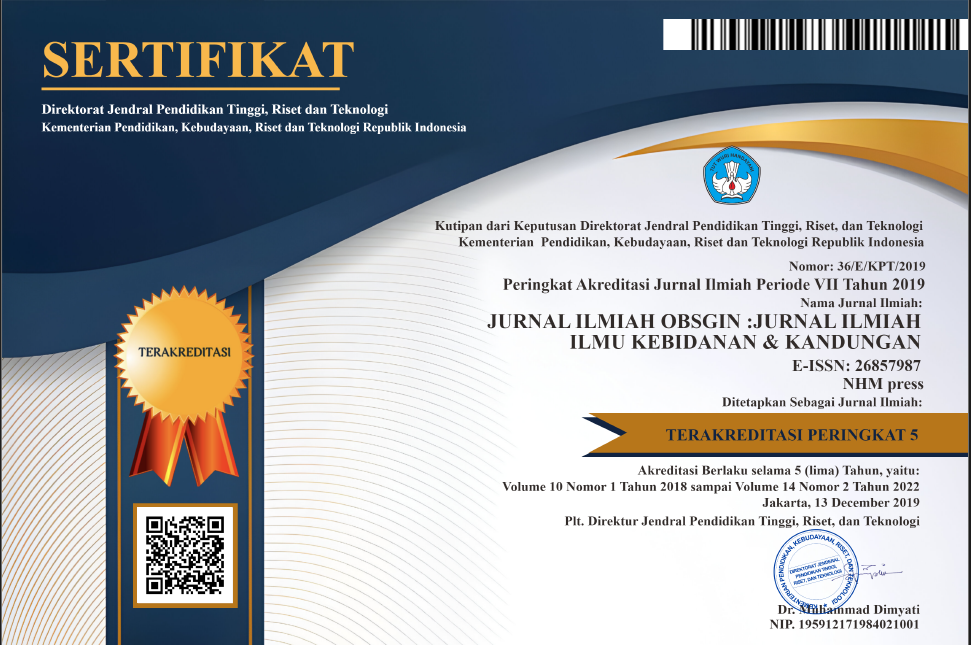Evaluasi Kebijakan Pencegahan Stunting di Kabupaten Asmat Provinsi Papua Selatan
Abstract
Background: The prevalence rate of stunting in the last 2 years in Papua Province from 29 regencies/cities with the highest stunting cases, namely Asmat Regency, has increased, namely in 2021 by 38.1%, rising to 54.5% in 2022. Objective: To evaluate prevention policies Stunting in ASMAT Regency, South Papua Province. The research method is qualitative descriptive by conducting in-depth interviews, Focus Group Discussions (FGD) and observation. The selection of informants in this research used a purposive sampling technique. There were 12 informants in the research. Research instruments: interview guide, in-depth interview recording tool. Data Analysis Using Content Analysis. Research results: The obstacles to implementing stunting prevention policies from the input side are that human resources are still lacking and community health centers which are far from the Health Service cannot implement the 1000 HPK program. The obstacles to the process component are the cadres who cook the food for 1000 HPK (not nutrition officers) so it is found that there are still vegetables that are too cooked in cooking and the lack of counseling from Health Officers when monitoring meals on the spot at the 1000 HPK Post, recording and reporting from the midwife guarding the 1000 HPK Post less complete. Obstacles from the Output Component of basic immunization coverage are still some that have not met the target because parents are prohibited from immunizing and when the baby is re-visited for immunization, the baby has been taken to the forest to look for food for months or even years, carrying pregnant women and children. child. Suggestion: it is best to issue a policy from the Regent to prohibit pregnant women and children from being taken into the forest to look for food so that they can participate in the 1000 HPK program from the beginning of pregnancy until the baby is 2 years old to prevent stunting.
References
Arsyati, A. M. (2019). Pengaruh penyuluhan media audiovisual dalam pengetahuan pencegahan stunting pada ibu hamil di Desa Cibatok 2 Cibungbulang. Promotor, 2(3), 182-190
Badan Penelitian dan Pengembangan Kesehatan. (2013). Hasil Utama Riskesdas. Jakarta: Kementerian Kesehatan RI (Kemenkes RI).
Badan Penelitian dan Pengembangan. (2018). Hasil utama riskesdas. Jakarta: Kemenkes RI.
Bappenas RI. (2012). Pedoman perencanaan program gerakan sadar gizi dalam rangka seribu hari pertama kehidupan (1000 HPK). Jakarta: Bappenas RI.
Dwijayanti, F. and Setiadi, H. 2020. ‘Pentingnya Kesehatan Masyarakat, Edukasi Dan Pemberdayaan Perempuan Untuk Mengurangi Stunting Di Negara Berkembang’, Jurnal Prosiding Seminar Nasional Kesehatan, pp. 16–25
Iqbal, M. 2022. Evaluasi Program Zinc Sebagai Intervensi Gizi Khusus Dalam Pencegahan Stunting Pada Program Gerakan 1000 Hari Pertama Hidup (HPK) di Puskesmas Halmahera Kota Semarang. Jurnal Manajemen Kesehatan Yayasan RS. Dr. Soetomo, 8(2), 309-317.
Khoirunisak, N. & Wulanjari, D. (2021). Penanganan Stunting Dan Aki AKB Era Pandemi Covid-19 Dengan 3M Di Desa Trewung Kecamatan Grati Kabupaten Pasuruan. J. Abdi Masy. Indones. 1, 83–90.
Marini A, Rokx C, Gallagher P. (2017). Standing tall: Peru’s success in overcoming its stunting crisis. World Bank Group;
Mogan, M., Trisnawati, E., & Wardhani, Y. (2022). Upaya Peningkatan Pengetahuan dan Pemberian Suplemen Kalsium dan Vitamin D Untuk Mencegah Hipertensi pada Kehamilan di Desa Nolokla. Jurnal Kewarganegaraan, 6(2), 4593-4598.
Nengsih, R. F. (2012). PENGARUH CARA DAN SUHU PENGOLAHAN TERHADAP KANDUNGAN KALSIUM PADA DAUN SINGKONG (MANIHOT UTILISIMA) TUMBUK (Doctoral dissertation, UNIMED).
Mukhi, S., & Medise, B. E. (2021). Faktor yang Memengaruhi Penurunan Cakupan Imunisasi pada Masa Pandemi Covid-19 di Jakarta. Sari Pediatri, 22(6), 336.
Rosa BCh, Sari K, Yunita SP, Amaliah N, Utami NH. (2016). Peran intervensi gizi spesifik dan sensitif dalam perbaikan masalah gizi balita di kota Bogor. Buletin Penelitian Kesehatan 44(2):127-38.
Sistiarani, C., Gamelia, E., & Sari, D. U. P. (2014). Fungsi pemanfaatan buku KIA terhadap pengetahuan kesehatan ibu dan anak pada ibu. Kesmas: Jurnal Kesehatan Masyarakat Nasional (National Public Health Journal), 8(8), 353-358
SSGI I. (2022). Hasil Survei Status Gizi Indonesia (SSGI) 2022. Published online 2022.
The Lancet. (2013). Executive summary of the lancet maternal and child nutrition series. The Lancet.
Wahyuningsih, W. et al. (2022). Stunting Prevention and Control Program to Reduce the Prevalence of Stunting: Systematic Review Study. Open Access Maced. J. Med. Sci. 10, 190–200
Wanimbo, E. and Wartiningsih, M. 2020. ‘Hubungan Karakteristik Ibu Dengan Kejadian Stunting Baduta (7-24 Bulan) Di Karubaga’, Jurnal Manajemen Kesehatan Yayasan RS.Dr. Soetomo, 6(1), p. 83. Available at: https://doi.org/10.29241/jmk.v6i1.300.
World Health Organization (WHO). (2014). What’s at stake.Tersedia dari: https://doi.org/10.1111/evo.12990
Yoyoh, I. (2023). Peningkatan Pengetahuan Melalui Pemberdayaan Kader dan Tokoh Masyarakat Dalam Sosialisasi Dampak Stunting Terhadap Tumbuh Kembang Anak Serta Pencegahannya. Nanggroe: Jurnal Pengabdian Cendekia, 2(6), 18-23.
Zaif RM, Wijaya M, Hilmanto D. (2016) . Hubungan antara riwayat status gizi ibu masa kehamilan dengan pertumbuhan anak balita di kecamatan Soreang Kabupaten Bandung. Jurnal Sistem Kesehatan 2(3):156-63.











